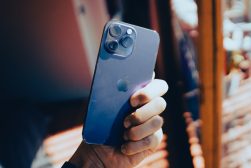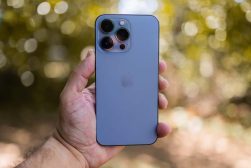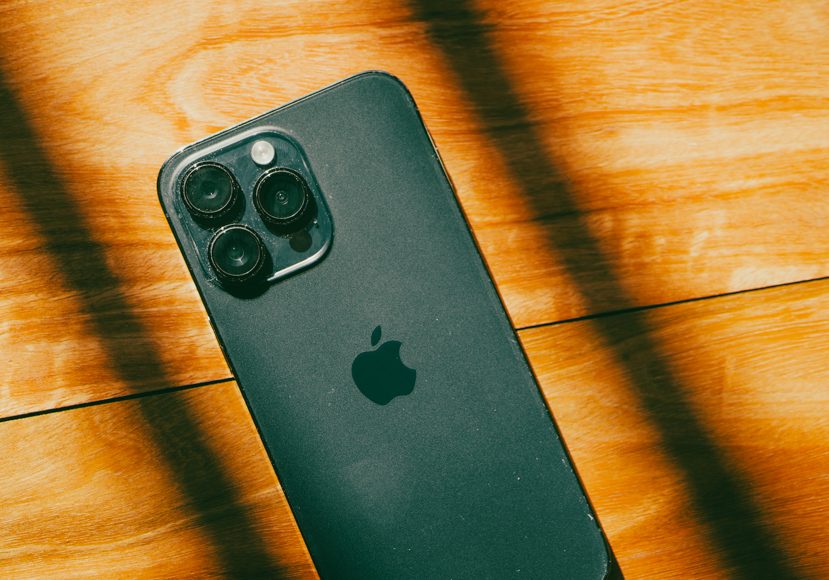
What 3 Camera iPhones Are Available in 2023?
Thinking of upgrading to an iPhone with 3 cameras? In this guide we dive into which iPhone models offer 3 rear cameras and whether or not you need one.
Learn | By Jeff Collier
Curious about what the latest iPhone models with three cameras have to offer?
In this comprehensive guide, I’ll walk you through the evolution of iPhone cameras and discuss each iPhone model with 3 cameras.
I’ll also explain the advantages of having multiple camera lenses and the role of LIDAR technology in iPhone cameras.

Want to learn how to take AMAZING photos with your iPhone? Discover hundreds of exciting secrets to totally transform your iPhone photography with this course!
Tap red button to save 80%
By the end of this guide, you’ll have the knowledge and insights to choose the perfect 3-camera iPhone for your needs.
From detailed close-ups to expansive landscapes, iPhone photographers have more creative possibilities than ever before.
I’ve owned various iPhones over the years, but am most happy with my 3-camera iPhone 14 Max.
However, that’s not to say it’s for everyone – let’s take a closer look at the options.
Summary
- Apple has revolutionized the camera experience with iPhones that have single, dual and now three rear cameras.
- The latest iPhone models offer improved depth sensing, low light performance and creative possibilities thanks to telephoto & ultra-wide lenses.
- Consider your budget, camera performance & LIDAR functionality when selecting a 3-Camera iPhone for you.
iPhone Models with Three Rear Cameras
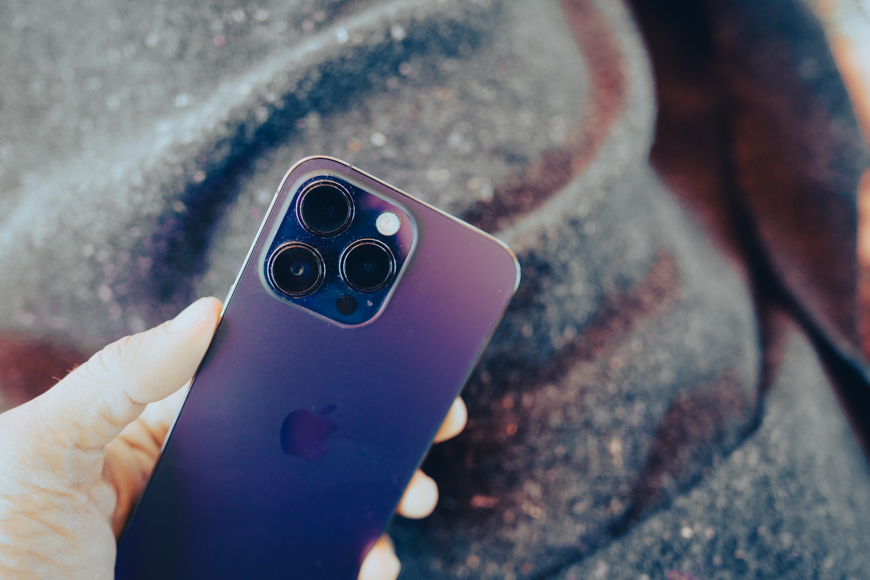
Apple’s quest for perfecting smartphone photography led to the development of iPhone models with three rear cameras, starting with the iPhone 11 Pro series.
These iPhones come equipped with a main camera featuring a wide lens, an ultra-wide lens, and a telephoto lens, offering users a versatile and powerful photography experience.
The ability to record videos with three cameras simultaneously allows for capturing different perspectives and levels of zoom, providing endless creative possibilities.
Let’s examine each iPhone model with three rear cameras in detail, highlighting their unique features and improvements compared to previous models.
iPhone 11 Pro and Pro Max
As the first iPhones with three rear cameras, the iPhone 11 Pro and Pro Max brought a revolutionary change to mobile photography.
These models include a standard wide-angle camera, an ultra-wide-angle camera, and a telescopic camera, all with 12MP resolution.
The ultra-wide-angle camera has an f/1.8 aperture, while the telescope camera boasts an f/2 aperture.
With 4k/60fps video recording capabilities and extended stabilization and dynamic range, the iPhone 11 Pro and Pro Max raised the bar for smartphone camera features.
The three-camera system enabled users to capture stunning images with greater detail and control than ever before.
iPhone 12 Pro and Pro Max
Building on the success of the iPhone 11 Pro series, the iPhone 12 Pro and Pro Max introduced a LIDAR scanner for improved depth sensing and low-light performance.
The primary wide camera on these models features a 12MP sensor with a 26mm equivalent and f/1.6 aperture, with the Pro Max allowing for more light capture per pixel.
The iPhone 12 Pro Max stands out with its 2.5x zoom capabilities, providing photographers with the ability to capture more defined photos.
These enhancements further solidified the iPhone’s reputation as a powerhouse in mobile photography.
iPhone 13 Pro and Pro Max
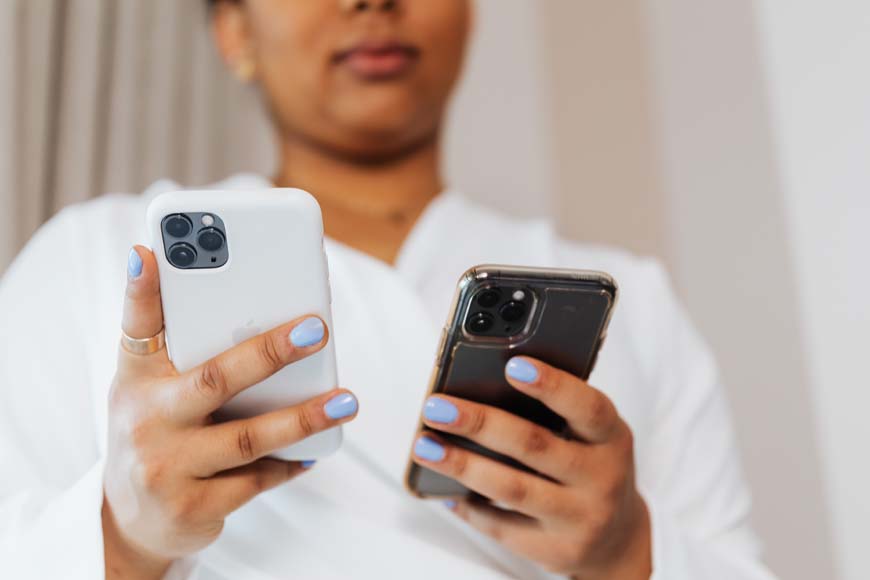
Image Credit: Karolina Grabowska
The iPhone 13 Pro and Pro Max continued the trend of camera enhancements, featuring an Ultra Wide camera, a longer telephoto camera, a new sensor for the main camera, and OLED Super Retina XDR displays.
With a 3x optical zoom and digital zoom capabilities, these models offered even greater flexibility for photographers to capture their desired shots.
As the iPhone camera technology continued to evolve, users could experience even better image quality and versatility with the iPhone 13 Pro and Pro Max.
iPhone 14 Pro and Pro Max
The iPhone 14 Pro and Pro Max are the latest iPhones from Apple, boasting larger sensors, bigger apertures, and more advanced zoom capabilities.
The iPhone 14 Pro Max features an impressive 48MP Main camera. It includes a powerful quad-pixel sensor for dynamically adjusting to photos and second-generation sensor-shift optical image stabilization.
The quad-pixel sensor in the iPhone 14 Pro Max optimizes detail in ProRAW and opens up new creative possibilities for pro users.
With each new iPhone model, the camera technology becomes more advanced and powerful, offering users an unparalleled photography experience.
What’s the Advantage of Multiple Camera Lenses on an iPhone?
Having multiple lenses on iPhones, such as telephoto and ultra-wide lenses, offers significant advantages in terms of functionality and image quality.
The three lenses in the iPhone’s camera system – telephoto, wide, and ultra-wide – work together to provide users with a versatile and powerful photography experience.
In fact, three cameras can capture more light than one, resulting in better image quality.
Let’s take a closer look at the advantages of telephoto and ultra-wide lenses individually, and how they impact the overall camera performance.
Telephoto Lens Advantages
Telephoto lenses offer numerous benefits, such as improved zoom capabilities and better portrait mode performance.
With longer focal lengths, telephoto lenses can capture far-away objects with accurate perspective, adding depth to your images.
Additionally, the zoom mode feature enhances the overall photography experience.
The use of telephoto lenses in iPhones has made it easier to achieve a shallow depth of field, allowing subjects to stand out by blurring the background.
This enhanced control over image composition provides users with professional-grade photography capabilities right in their pockets.
Ultra-Wide Lens Benefits
Ultra-wide lenses bring their own set of advantages to the table, such as the ability to capture expansive landscapes, architecture, and real estate.
By offering a wider field of view than standard lenses, ultra-wide lenses enable users to capture more of a scene in a single shot.
The dramatic effect of iPhone ultra-wide lenses can make spaces appear larger and more impressive, adding a creative edge to your photography.
With the addition of ultra-wide lenses in the iPhone camera system, users can explore a whole new world of photographic possibilities.
Comparing iPhone Camera Performance: Pro vs. Pro Max
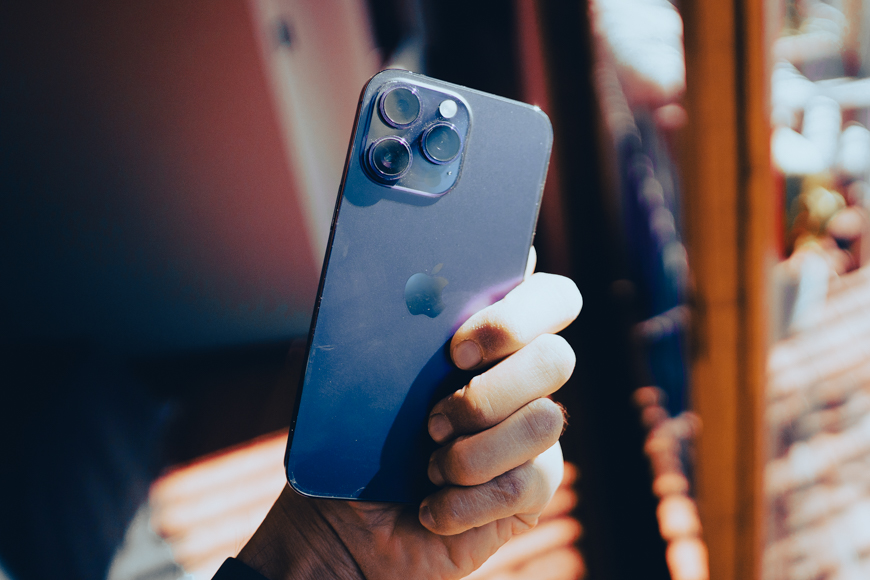
My iPhone 14 Pro Max
When it comes to choosing between iPhone Pro and Pro Max models, it’s important to consider the differences in camera performance.
Although both models feature the same triple camera system, the Pro Max boasts a larger 48MP main camera sensor, faster apertures, and an extra camera with a telephoto lens.
Additionally, the Pro Max offers better optical zoom capabilities – ultimately, this is why I chose to the Max model, since I wanted the telephoto lens.
The faster apertures in the Pro Max models result in better low-light performance and faster shutter speeds.
(Even with Night Mode, the low-light performance is better on the Pro Max model, since it can ‘suck in’ more light.)
By understanding the differences in camera performance between the Pro and Pro Max models, you can make an informed decision based on your photography needs and preferences.
The Role of LIDAR in iPhone Cameras
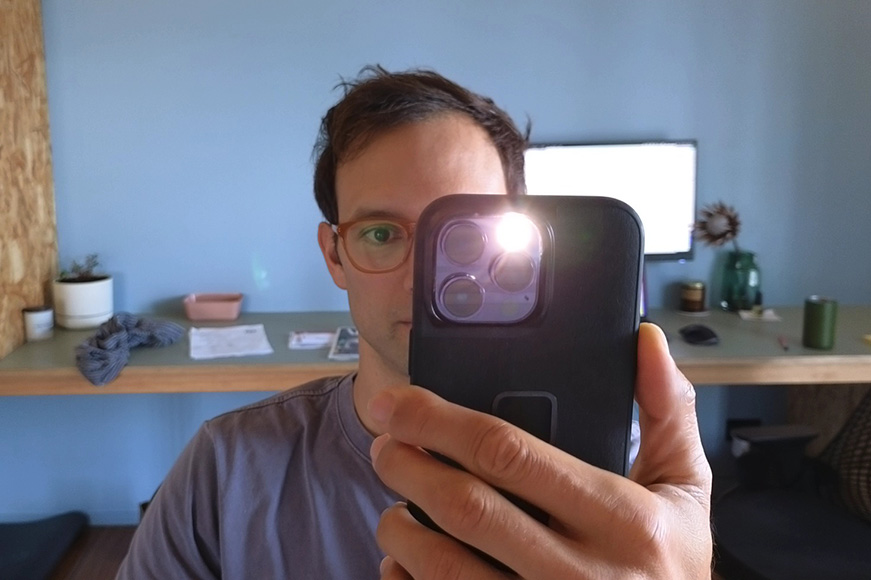
LIDAR technology has played a significant role in enhancing iPhone camera capabilities. LIDAR sensors use laser light to measure the time it takes for light to bounce back after hitting an object, creating a 3D map of the surrounding area.
In iPhone cameras, LIDAR technology improves depth sensing, making autofocus faster and more accurate, and enhancing augmented reality features.
The addition of LIDAR technology in iPhone cameras greatly benefits augmented reality experiences, low-light photography, and object recognition and tracking.
With LIDAR-enabled iPhones, users can enjoy an even more immersive and interactive photography experience.
5 Benefits of LIDAR on iPhones
- Augmented Reality (AR): LIDAR enables more accurate and realistic AR experiences by precisely mapping the surrounding environment. It helps virtual objects blend seamlessly with the real world, allowing for immersive AR gaming, interior design simulations, measuring distances, and more.
- Improved Camera Capabilities: LIDAR enhances the camera’s ability to quickly and accurately focus in low-light situations. It assists with depth mapping, enabling Portrait mode effects with better subject separation and realistic bokeh.
- Enhanced 3D Scanning: LIDAR allows users to create detailed 3D scans of objects, rooms, or environments using specialized apps. This feature is beneficial for various applications like architecture, interior design, virtual tours, and 3D modeling.
- Better Spatial Understanding: LIDAR technology aids in better spatial awareness and object recognition. It can help with precise measurements, room dimensions, and obstacle detection, making it useful for applications like interior planning, furniture placement, and autonomous navigation.
- Enhanced Accessibility: LIDAR assists with depth perception and object recognition, benefiting accessibility features for visually impaired users. It helps in detecting distances, identifying objects, and providing real-time feedback for improved spatial awareness.
The Evolution of iPhone Cameras
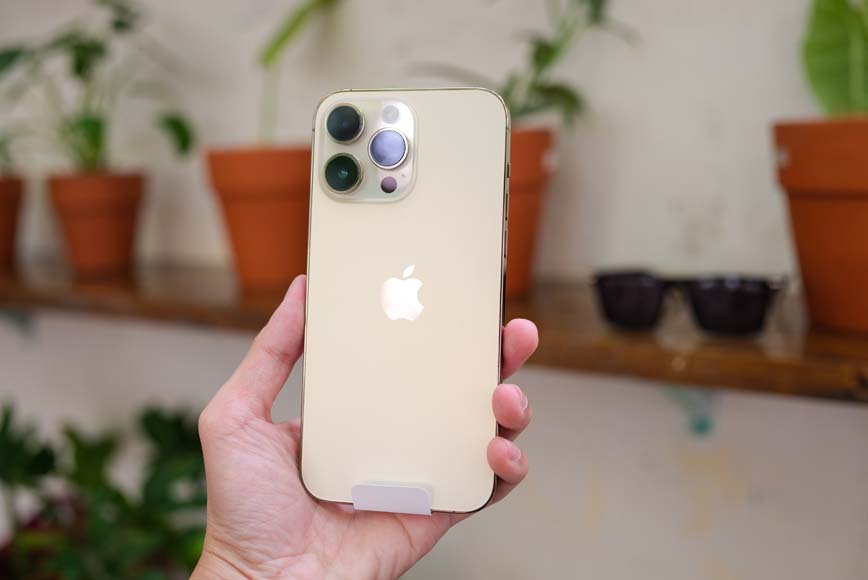
Image Credit: Thai Nguyen
Apple has always been a trailblazer when it comes to camera technology.
From the humble beginnings of single-lens iPhones to the advanced dual-lens systems, Apple has consistently pushed the boundaries of camera quality and functionality.
With the introduction of three cameras on iPhone Pro and Pro Max models, users now have even more control over their image captures and details.
Let’s take a brief journey through the history of iPhone cameras.
Single-Lens iPhones
Before we delve into the world of three-camera iPhones, let’s first appreciate the simplicity of single-lens cameras, like the iPhone SE and iPhone XR.
These devices came with a single 12-megapixel f/1.8 “wide” camera.
While these iPhones could capture decent photos, they had their limitations, especially in portrait mode, where machine learning algorithms had to guess depth information without the help of a second camera.
Although single-lens iPhones were groundbreaking at the time, they couldn’t provide the level of detail and control that professional photographers and enthusiasts crave.
That’s where dual-lens iPhones came into play, offering a significant upgrade in camera performance with their dual-lens cameras.
Dual-Lens iPhones
The iPhone 7 Plus marked a turning point in iPhone camera history, featuring the first dual-lens camera system.
The iPhone 12 Pro, in particular, brought some cool new features to the table, such as a third telephoto camera, a LIDAR sensor, and the ability to take Deep Fusion photos.
The iPhone 12 Pro Max took things a step further, boasting a 12-megapixel f/1.6 aperture wide camera with a 47% larger sensor for improved low-light photos, an 87% improvement to be exact.
The addition of LIDAR sensors in the iPhone 12 Pro camera system was a game-changer, enabling 6x faster autofocus in dim light and the ability to capture Night Mode portrait shots.
With the stage set for even more advanced camera systems, Apple introduced the first iPhones with three rear cameras.
3 Camera iPhones: Final Words
Throughout this guide, we have explored the exciting world of iPhone cameras with three rear lenses.
From the revolutionary iPhone 11 Pro series to the latest iPhone 14 Pro and Pro Max models, Apple has consistently raised the bar in mobile photography.
With multiple lenses, including telephoto and ultra-wide, users can enjoy a versatile and powerful photography experience.
If you’re trying to decide which 3-camera iPhone is right for you, consider the importance of camera performance, LIDAR functionality, and your budget.
FAQs
Which of the iPhone has 3 cameras?
The iPhone 13 Pro and 13 Pro Max are the only iPhones with three cameras. These models feature a main wide-angle lens, an ultrawide lens and a telephoto camera with 3x optical zoom.
So if you’re looking for the latest iPhone with three cameras, these are the models to check out.
Which iPhone 14 has 3 cameras?
The iPhone 14 Pro and Pro Max are both equipped with three rear cameras – a main wide-angle, an ultra-wide and a 3x telephoto camera for zooming in on distant objects.
So if you’re looking for an iPhone with three cameras, those are the ones to go for!
Does iPhone 11 have 3 cameras?
Yes, the iPhone 11 does have three cameras. The Wide, Ultra Wide and Telephoto cameras provide enhanced image quality and increased capabilities for taking photos and videos.
Does iPhone 11 have 2 or 3 cameras?
Yes, the iPhone 11 has two cameras – one wide-angle lens and one ultra-wide-angle lens.
The iPhone 11 Pro and Pro Max on the other hand have three cameras: a wide-angle lens, an ultra-wide-angle lens, and a telephoto lens.
Which iPhone models have three rear cameras?
If you’re looking for an iPhone with three rear cameras, the 11 Pro, 11 Pro Max, 12 Pro, 12 Pro Max, 13 Pro, and 13 Pro Max are all excellent options.

Want to learn how to take AMAZING photos with your iPhone? Discover hundreds of exciting secrets to totally transform your iPhone photography with this course!
Tap red button to save 80%





